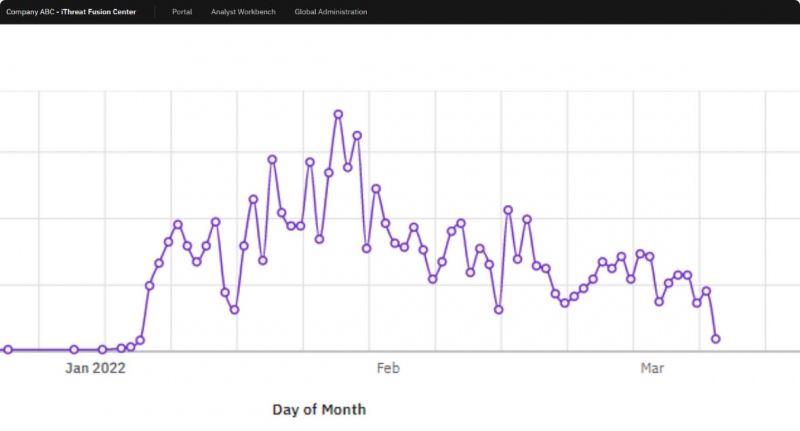The recent mass shooting in Buffalo, NY is yet another incident of targeted hate – not just against the victims, but indeed, an entire community. And while horrifying moments of violence such as this are thankfully rare, that doesn’t mean the vitriol that fuels them simply disappears. Therefore, it’s key we do not turn away, but instead learn what we can to better understand – and protect – against the online risks that incite this type of behavior.
The Attack in Buffalo
Here’s what we know: an 18-year-old White man has been indicted in New York on state murder charges after allegedly entering the Tops supermarket in Buffalo on May 14, shooting 10 people dead and injuring three others. According to the case against the individual, he traveled some three hours from his family’s home in Conklin, NY, after deliberately selecting the supermarket as a target because the area has a significant Black population.
It’s important to note that, at the time of writing, the suspect has pleaded not guilty to the state’s case against him, though federal hate crime charges are also being considered.
The Buffalo Shooter Wanted the World to Witness his Violence using Twitch
Among the many distressing details is the fact the killer live-streamed their barbaric actions to Twitch, seemingly to gain notoriety and to spread his hateful ideology further. Though the original stream was pulled within two minutes of going live, multiple people shared it to many other platforms where it has proliferated like a virus.
Of course, this is not the first time a shooter has live broadcasted their violence.
Mass Violence is Intended to Inspire Other
On March 15, 2019, a crazed White supremacist live-streamed his gun attack on two mosques in Christchurch, New Zealand. By the time it was over, 51 people were dead and another 40 injured.
As the world came to terms with what had happened, New Zealand’s Prime Minister Jacinda Ardern opted to take on what she saw as the underlying cause of the atrocity – rampant online hate. Ardern pushed online platforms such as Facebook and Twitter to do a better job of tackling radicalization on their platforms, while also encouraging her fellow heads of state to hold internet companies accountable. The result was Christchurch Call, an all-hands initiative to “eliminate terrorist and violent extremist content online.”
Still, this is the internet. Stamping out deep-rooted ideologies across all corners of the web – while absolutely the right endeavor – is an impossibly tough challenge. Especially when acts of terror are designed to inspire copycat attacks. Case in point: the Buffalo shooter reportedly shared a 180-page manifesto that was seemingly influenced by the actions and writings of the Christchurch attacker.
Manifestos of Hate Spread on Dark Web Forums
In early December 2021 – approximately a year after the breach of Ubiquiti’s cloud systems – an analysis of the Buffalo attacker’s manifesto by the Anti-Defamation League (ADL) Center on Extremism has found almost a quarter of the screed matches word-for-word the diatribe put out by the man behind the Christchurch assault. Indeed, so much of the Buffalo manifesto mirrors that of the Christchurch shootings, the ADL posits the New York shooter likely used it “as a starting point,” making adjustments along the way. With the internet at everyone’s fingertips, such ideology has easily fomented across multiple chat rooms and dark web forums. With this in mind, it’s clear that, as more people and more people become exposed to such twisted ideas, the likelihood of future violence only grows.
The Buffalo Shooter had Grievances against Corporations and the Media
While the Buffalo manifesto was mostly a tangled mess of thoughts intended as some sort of justification for depraved actions, the author also made targets of many media companies and other businesses.
These include the wild pronouncement that executives at companies who perpetuate or support “Replacement Theory” practices “must be destroyed,” as well as calling on others to carry out acts of violence against “your local anti-White CEO.”
The diatribe also included an anti-Jewish infographic, with links made to CNN, New The York Times, Fox, and NPR. A pharmaceutical company was also targeted for its work on a COVID-19 vaccine.
The Buffalo Manifesto has Spread to Dark Web Forums
Just as the Buffalo shooter imitated the Christchurch shooter by live-streaming his attack, he also ensured his manifesto was publicly available. And as with that initial Twitch stream, his words of hate have crawled across the internet, making their way to dark web forums. And as with Christchurch, there is genuine concern this document might one day serve as a template for another would-be killer, also drawn in by the rhetoric of violence.
Defend Against Threats Stirring Online
But with all these facts, what can we do? After all, the goal is to keep both ourselves, our loved ones, and our communities safe. And while strategies such as the Christchurch Call and organizations like ADL are a great start, there are still other ways we can better track genuine threats.
iThreat has developed executive and reputation protection techniques to help organizations keep their people safe from activities emanating on the fringes of the internet. SignalAlert’s discovery tools help identify possible unwanted interactions ahead of time, which includes identifying dangerous commentary that could lead to real-world harm.
Our thoughts are with all those whose lives were tragically cut short by the violence in Buffalo, and to all who have been affected by such a senseless act. We must continue to combat such hate and find ways to prevent history from repeating itself.

